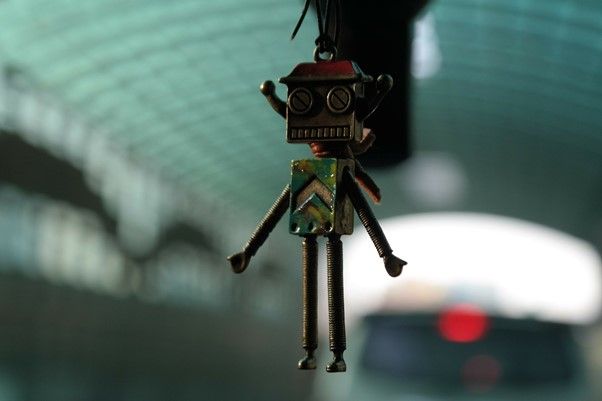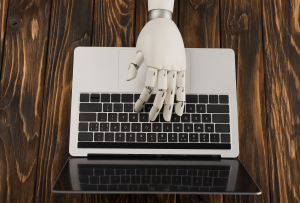Will robots replace the Administrative Assistant?
With the rise of robotics it is expected that the job market will change significantly. Will the job administrative assistant still exist in 20 years? Or are the robots going to take over?

Thirty-five percent of the jobs in the United Kingdom will disappear within 20 years as a side effect of robotization. On the basis of research by Deloitte and Oxford University, the BBC has created a website that shows exactly which professions will disappear. However, some jobs are more easy to automate than others.
Humans are still better in professions where creativity, social interaction and physical velocity are central. Think of artists, psychologists, social workers and top athletes. That’s because robots don’t have the same emotional intelligence and lack the unique traits of sports people – for now.
However, robots outperform us in many other aspects already. Especially occupations that mainly deal with manual, repetitive actions are under threat. The algorithms of a robot are becoming increasingly advanced, making the automation of more and more tasks possible and – on the long run – more occupations obsolete.
97%
One of the professions that is likely to disappear in the coming decades is the Financial. The automation risk of both administrators and account managers is 97%, according to the BBC.
It is important to realize that not everything can be automated and some things never will. In the coming years, the robot will grow into an assistant role and take on repetitive tasks. Certain actions will remain out of range for automation. Negotiating, assisting, and providing original solutions are still too special for the robot to perform successfully.
Much of the administrator’s work is still done manually. Partly because 91% of the 500 billion global invoices are sent out on paper. And many of these 455 billion paper invoices are manually matched to purchase orders and booked into the system. This is something robots can already do.
An Administration Robot can already do this
Essentially, a procure-to-pay application does exactly the same as any other robot. It can already work independently based on very few instructional inputs. Here is a shortlist of functionalities.
Automated line recognition
Recognition software can automatically determine the most vital information on an invoice (such as headers and line items). This makes manual data-entry obsolete and saves a lot of time. This works for both PDF and scanned invoices. The emergence of e-invoices will render this entire process redundant.
Automated matching and booking of invoice
Let the robot match invoices to delivery receipts, contracts and purchase orders. Book more invoices in less time. Define how to handle mismatches. Set up margin rules to let the robot handle small discrepancies on its own. Your team members have to evaluate and correct only the larger mismatches.
Generate reports effortlessly
Data for a monthly, quarterly, or yearly closings is always up to date. The data is available at any time because invoices are already processed in the purchase-to-pay application. Therefore, generating reports is a matter of one click on the button.
Notify budget owners automatically
An invoice usually requires approval from the relevant budget owner. In an automated process, the invoice will be forwarded to the correct approver and there is no risk of lost invoices. In addition, the status of an invoice is always clear and archived for effortless auditing. Without automation, an administrator wanders around the organization with the paper invoice, which results in poor insight into the status.
It’s just a sample of the actions that are already being automated. The administrative employee can be more concerned with proactive control and price negotiations – On time payment may be enough to persuade a supplier to lower the price.
What will happen in the next 20 years?
Robotization for the administrative process is under way. But should administrative employees be worried?
Short term, probably not. Long term, yes.
Much of the administrative process will be automated. The scope of the administrative employee will therefore change, a lot. The BBC even prophesizes that it won’t exist anymore. But there is enough time for retraining, as each job replaced will also create an opportunity for another profession, especially IT administrators and programmers. It is impossible to predict the situation so many years down the line, but change is imminent and unstoppable.
What do you think? What does the administrative profession look like in 20 years?
Weitere BlogsMore BlogsMeer blogs



